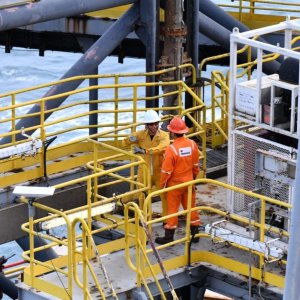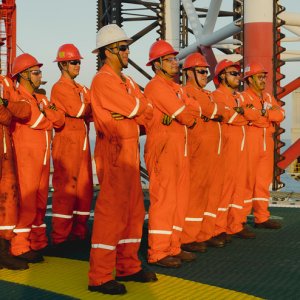Zero Maintenance Flexible Pipelines

STORY INLINE POST
Juan Ponce Saumel, CEO of Industrias de Tuberías Flexibles (ITF), was quick to respond to the opportunity to introduce a new technology to the Mexican oil and gas market six years ago. “One of the most valuable aspects of flexible steel piping is that maintenance is reduced to nearly zero, which is extremely attractive to the oil industry.” After researching the dierent types of flexible pipe available, Ponce Saumel went with Flexsteel, a technology developed by British company Wellstream, which in 2009 was sold to Prime Natural Resources, a privately owned Houston company. ITF was given the license for marketing Flexsteel products in Mexico, and introducing the technology to the Mexican market has been its primary mission for the last six years.
Flexible steel pipe has a number of uses in the oil and gas industry. Combining a core of steel with corrosion resistance and innovative installation procedures, Flexsteel technology has been used in a number of situations in the country as an alternative to conventional steel pipe. Flexible steel pipe can be particularly useful in situations where saline fluids need to be transported through pipelines, as the PE liner of Flexsteel pipe oers corrosion resistance and therefore removes the need for cathodic protection that would be essential in a conventional steel pipe. However, Flexsteel pipes can be used between two sections of conventional pipe where cathodic protection is being employed, as the current can be transmitted through the steel sections of the pipe which are protected by the PE liner. The PE liner also means that the chance of contamination is reduced to almost zero: whereas gases can permeate conventional steel pipes, they are unable to escape from PE lined Flexsteel pipe, and can be run along the pipe and disposed of safely. This method can be used to securely dispose of H2S, methane, and CO2.
“One of the main advantages over conventional steel pipe is, predictably, its flexibility. Curves can be dealt with through the flexibility of the pipe: for example, a piece of 20cm diameter Flexsteel pipeline can be curved at a 90° angle using only 2m of pipe,” explains Ponce Saumel. “Flexsteel is the only flexible pipe for onshore use certified with API 17J, which requires the manufacturer to produce pipes with a 20 “One of the main advantages over conventional steel pipe is, predictably, its flexibility. Curves can be dealt with through the flexibility of the pipe: for example, a piece of 20cm diameter Flexsteel pipeline can be curved at a 90° angle using only 2m of pipe,” explains Ponce Saumel. “Flexsteel is the only flexible pipe for onshore use certified with API 17J, which requires the manufacturer to produce pipes with a 20
Flexsteel pipe is an unbonded pipe, which gives it advantages over other flexible pipes in the market, which are usually constructed from fiberglass for this material is not as flexible as Flexsteel pipe and is thus subject to breakages. Whereas fiberglass pipes were designed with deepwater applications in mind, Flexsteel is used in onshore and in shallow water situations
ITF’s first break in the introduction of Flexsteel pipe to the Mexican oil and gas industry was in Villahermosa. Having decided to concentrate on getting Pemex to use the technology, it was an open-minded regional director that decided to test the pipe in a direct assignment contract, in an area where no other technology could be used. “The project was located in a protected region in the delta of the Usumacinta river, where entering to conduct maintenance work was extremely di·cult,” Ponce Saumel explains. “We used Flexsteel pipe within the existing steel pipe, which was condemned because of a lack of structural and mechanical integrity. This is not the only place where we have laid Flexsteel pipe within existing infrastructure.” The rehabilitation solution means that right of way does not have to be renegotiated, which can often be a major headache for operators.
Flexsteel pipe ranges from 2 to 8 inches in diameter, but Ponce Samuel believes that it will soon be available in up to 12 inch diameters. The CEO of ITF has great expectations for the potential of Flexsteel pipe in the Mexican market. In addition to several onshore applications in the Burgos and Poza Rica areas, where Flexsteel pipe is used to transport frac water, oil, gas and condensates, ITF is also working on a technological test for Pemex to see the advantages of using Flexsteel pipe in shallow water. This pipe can be used in water depths up to 100m, and as most of Pemex’s shallow water platforms are located in water depths of between 40m to 70m, Ponce Samuel believes that the pipe’s introduction will be a revolution for the NOC in terms of reducing maintenance on oshore pipelines.























